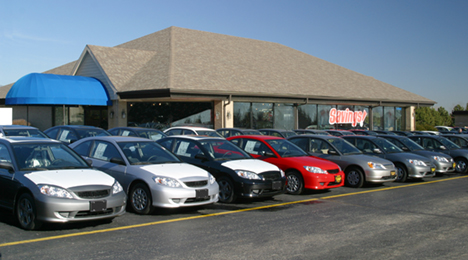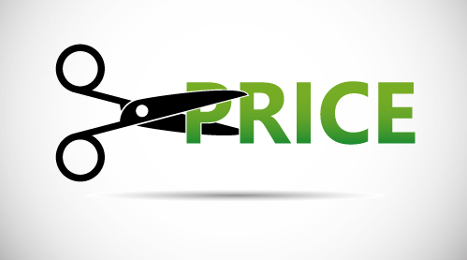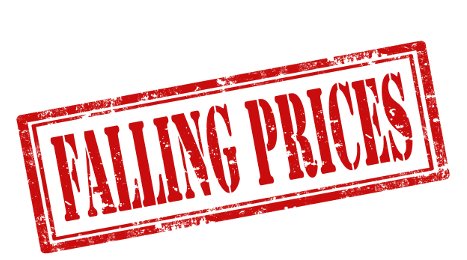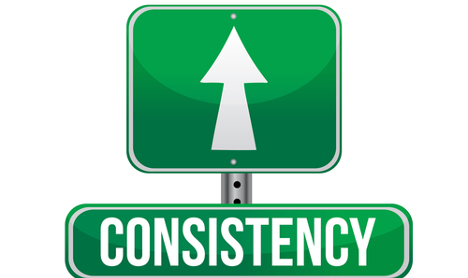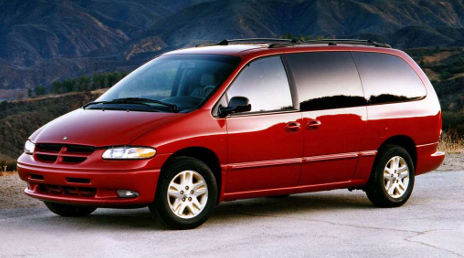Dealers who participated in KeyBanc Capital Markets’ monthly automotive retail industry update survey gave some candid comments about their used-vehicle prospects, especially in light of 44 percent of respondents saying they expected gross profit per unit to soften by about $50.
Despite that gross-profit expectation, the vast majority of dealers surveyed in September (78 percent) told KeyBanc that they projected year-over-year used sales to rise this month. Of that amount, a third thought that sales would climb between 5 percent and 10 percent, while another third said that the increase would be up to 5 percent.
Among the comments KeyBanc shared, the perspective of used-car managers who participated in the firm’s monthly project covered a wide array of dealership elements, but many focused on inventory and gross profit.
“My inventory levels were just right. We re-price inventory on an ongoing basis, but our gross profit per unit is relatively stable,” one dealer said.
“We didn’t experience any impact. Our Inventory was good in 3Q, and we didn’t see any real impact,” another dealer stated.
“Maybe a couple hundred dollars lower than last year, but I’m new to this store,” yet another mentioned about gross profit.
The connection between inventory and gross profit continued in KeyBanc’s survey, which prompted analysts to say they “remain bullish on the outlook” for dealers.
“We could’ve used more cars, but gross profit per unit was about the same,” a dealer told analysts.
“A little pressure in prices, but no real push on our inventory position,” another dealer added.
One store shared about how what vehicles were on the lot didn’t give the dealership a good chance to succeed.
“Wrong kind of inventory. Too old. Too many miles,” the dealer said. “No impact on gross profit.”
Meanwhile, one dealer comment showed some recent successes — and the strategy of how the store obtained them.
“Our gross profit per unit went up $488 compared to last year,” the dealer said. “If a car doesn’t sell within 20 days, we immediately re-price. We don’t wait.”
The final two dealers who shared how their stores are performing with KeyBanc also touched on inventory.
“Not enough cars was our experience,” a dealer said. “We actually went up in gross profit — more than $100.”
The last dealer acknowledged, “Yes, prices are coming down, but not anymore than normal.”
Beyond the direct dealer comments, KeyBanc’s monthly survey also highlighted dealer sentiment about F&I gross profit, how subprime borrowers are being financed as well as elements of the new-vehicle department.
The majority of dealers surveyed (67 percent) told the firm that F&I gross profit is on track to increase by less than $50, while another 22 percent saw that figure softening by about $50.
A total of 56 percent of dealers indicated conditions for subprime financing was staying the same as only 11 percent saw finance companies tightening their underwriting for potential buyers in this credit tier.
Finally on the new-car side, 56 percent think gross profit per new model turned would be staying flat while the remainder split evenly between that figure increasing or decreasing by $50 or less.
A substantial portion of dealers surveyed (44 percent) said they see automaker stair-step incentive programs remaining stable while another 33 percent thought OEMs are ramping up these initiatives.
Wrapping up what would be the weakest third quarter for used prices since 2002, wholesale prices softened once again last month.
According to the September installation of ADESA chief economist’s Kontos Kommentary, this marked the fifth month in a row auction prices have fallen.
According to ADESA Analytical Services’ monthly analysis of wholesale used-vehicle prices by vehicle model class, wholesale prices last month fell by 0.4 percent to an average price of $9,557.
Though dropping a bit from August, this number actually marks an 0.8-percent increase from September 2013.
“September’s modest year-over-year increase in average prices reflects a higher percentage of institutional sales of late-model vehicles this year versus last, and therefore, masks the softness in prices seen by looking at those sales on a disaggregated basis,” Kontos explained.
“Improved retail sales of used vehicles after a tough summer cushioned the blow to wholesale prices from growing supply,” he added.
According to CNW, retail used-vehicle sales last month were up 4.1 percent from August and 4.6 percent year-over-year.
In the auction lanes last month, prices for vehicle remarketed by manufacturers saw the biggest hit, falling by 4.2 percent from August and down 3.3 percent year-over-year. Kontos pointed out manufacturers were busy in September selling off elevated program vehicle inventories.
Prices for fleet/lease consignors were up next, down 2.0 percent sequentially and down 1.1 percent year-over-year.
Dealer consignors saw a 1.9-percent average price decrease versus August. That said, this is up 0.3 percent from September 2013.
Taking at a look at the individual segments, prices for minivans bucked the trend and rose significantly in September, with prices increasing by 15.6 percent from August and 7.1 percent year-over-year, to rest at an average price of $7,082.
Kontos says this bump in price “reflects an increase in the percentage of current and 1-year-old models sold in factory sales in September.”
Kontos also pointed out truck and car rates overall moved in opposite directions last month. Prices for trucks were on the ways up and cars showed some significant drops.
Truck prices rose an average of 1.3 percent from August and 7 percent year-over-year for an average price of $10,406 in September.
Besides minivans, the full-size SUVs saw a larger increase this past month, with prices rising by 1.3 percent from August and 0.8 percent year-over-year. Rounding out the increases were the full-size pickups with a 0.6-percent increase and the midsize SUVs with a 0.2-percent spike from August.
The cars, on the other hand, saw an average decline of 1.5 percent from August and 1.3 percent from September 2013 for an average price of $8,325.
The declines were led by the sporty cars, which saw an average price drop of 2.6 percent from August and 1.3 percent year-over-year.
Interestingly, though all other car segments saw declines, the full-size cars saw a 12.6 percent spike from August, but the average price of $6,516 still represented a 2.1-percent drop from September 2013.
After falling for the third straight month in September, auction prices are expected to continue their downward trend this month.
Last month, wholesale prices of vehicles up to 8 years in age fell by 3.6 percent from August, according to NADA Used Car Guide’s October Guidelines report.
This decline was well above the 2.8 percent average decline for the month over the course of the last two years.
And seasonality is predicted to rear its head this month, making October one of the weakest months of the year for used prices, “especially given the above average losses witnessed over the past few months,” NADA's Jonathan Banks said in the report.
Auction prices are expected to drop between 3.1 percent and 3.6 percent this month when compared to September, according to NADA.
In 2013, used prices fell by 3.6 percent in October, showing similar year-over-year trends.
Similar to trends seen in September, price declines for this month are expected to be the heaviest for the luxury car, luxury utility and midsize vans segments.
Subcompact, compact and midsize car depreciation should continue to be above average as well, the report stated.
Last month, the subcompact compact and mid-ize car segments saw prices fall by 3.6 percent, 3.9 percent and 3.7 percent, respectively.
In October, midsize and large pickups are expected to tout the strongest price retention, while depreciation for remaining segments should revolve around the industry average, according to NADA.
Prices were on a downward trajectory even before fall arrived. In fact, combined, the rate of depreciation over the past three months ended up marking the weakest third quarter for used prices observed since 2002.
In September, NADA’s seasonally adjusted used-vehicle price index fell down to 121.4 from August’s 122.7.
Interestingly, even though prices have been falling at a more rapid pace in the second half of the year, prices year-to-date remain 1.6 percent higher than the same period of last year.
This is due in part to the large pickup segments. Prices for this segment sit 10.2 percent higher than the same period of last year.
Prices for large SUVs, midsize vans and midsize utilities have grown by 3.5 percent to 4.7 percent, while compact and midsize car prices are on average 2.6 percent higher.
Looking out beyond this month, NADA predicts prices will fall 2.5 percent in November before falling back to a rate of 1 percent to 1.5 percent depreciation in December to finish out the year.
Comments thrown back and forth in the lanes last week didn’t illustrate the market the industry is used to seeing in mid-October.
Instead of no sales and tough sales, the Black Book editorial staff were bringing back reports of a “steady, “good” and “solid market.”
Black Book editorial director Ricky Beggs broke down last week’s price movements at the auction in his latest “Beggs on the Used Car Market” report.
Last week, car prices dropped by an average of $64 at auction, which was the smallest drop since the $60 decline seen the week ending August 15.
The car segments seeing the strongest price retention in the lanes were the entry sporty cars, with a drop of $36, and the entry level cars, dropping by $40.
Interestingly, the more fuel efficient segments are performing well in the lanes, even as gas prices continue to drop.
Beggs pointed out that gas prices dropped 5 cents last week to $3.30 per gallon. This is 7 cents lower than levels seen during the same period of 2013.
Though still seeing less depreciation than the car segments, the trucks saw a bit more of a drop past week.
The truck segments fell by an average of $36, after falling by a mere $21 the week before and $14 the week prior.
The full-size pickups and full-size van segments continued to lead the pack with the strongest price retention among the trucks.
On the other hand, the full-size SUVs, full-size crossovers and the luxury level SUVs all saw price drops of over $100.
See this week’s video report above, which features an interview with Lynn Weaver, from Harrisburg Auto Auction and the current co-chair of the Independent Auto Group.
September marked the largest price decline for used vehicles all year, following seasonal trends most in the industry expect when the weather starts to cool.
According to Black Book data, the average price of a used vehicle for model years 2009-2013 saw the largest monthly depreciation of 2014, falling by 1.7 percent last month.
Interestingly, August saw stronger-than-normal retention, according to Black Book, with only a 1.3 percent drop, but September picked up the typical seasonal fall pattern of growing price losses at auction.
Domestic cars saw the biggest price declines in the lanes last month, with rates dropping by 3.4 percent.
Import cars fell closer to the overall average, seeing a 1.8-percent decline.
Trucks continued to see stronger price retention last month: domestic trucks fell by 1.2 percent; and import trucks fell by 1.5 percent.
Taking a look at segment movement last month, full-size passenger vans were once again ahead of the pack — for the third month in a row.
This segment actually saw growth of 0.6 percent last month.
Full-size cargo vans saw the second-best retention rates with a decline of only 0.7 percent.
Then came the trucks, which have seen unusually strong price retention all year.
Compact pickups saw a 0.9-percent month-over-month depreciation rate in September, ending the month with an average segment price of $15,692. This marks a decline of 5.7 percent from 2013 rates during the same period.
“A continuing trend over the last several months, trucks represented the vast majority of segments with the strongest performing monthly retention,” Black Book officials pointed out.
In fact, eight of the top nine segments with the strongest price retention were trucks, and 11 of the top 14 segment were trucks.
The declines were a bit larger among the car segments. The lowest depreciation rates was seen in the premium sporty cars segment, with a drop in price of 1.4 percent in September.
The average segment price at the end of September was $48,830, a decline of 12.5 percent change from year-ago levels.
On the other hand, the entry midsize cars led all segments for depreciation with a 3.2-percent month-over-month decline. The segment ended the month an average price tag of $11,601, a 13.7 percent drop from 2013 levels.
“There was very little surprise in this month’s report as it is expected that depreciation levels across the board will start to show noticeable acceleration between now and the year end,” said Ricky Beggs, editorial director at Black Book. “We will be keeping a close eye out for luxury type car segments, which are expected to show larger levels of depreciation through the remainder of the year, as well as continued falling gas prices that could impact smaller car prices.”
Last month, the luxury level cars saw a 2.9-percent decline from August but sits 16.8 percent lower in price than in September 2013. The segment ended the month with an average price of $21,111.
Black Book expects overall 2014 depreciation of 13.5 percent.
Manheim chief economist Tom Webb determined wholesale used vehicle values declined by a little more than 2 percent in the third quarter, stating the market showed signs of returning to more normal levels after historically high prices earlier in the year.
As a result, the Manheim Used Vehicle Value Index — a measure of wholesale prices adjusted for mix, mileage and season — ended the third quarter at 121.4, a decline of 1.1 percent compared to a year ago.
After posting increases over the winter and early spring, Manheim indicated that used-vehicle prices fell for five straight months through September. Webb pointed out a boom in new-vehicle sales during the quarter resulted in more trade-ins and lease turn-ins in the quarter, which led to an increase in inventories and put downward pressure on prices.
The price declines, however, took place as the market showed positive signs, according to Webb, who mentioned four elements in particular:
— Loan delinquencies and repossessions remained low.
— Certified pre-owned sales increased 20 percent in September, and showed a 10 percent rise year-to-date.
— New-model lease penetration rates went up.
Webb explained the CPO sales rise proves that consumers are showing a strong demand for quality, late-model used vehicles while the leasing trends also are a sign of satisfied customers.
The Manheim chief economist, who will be a part of the large contingent of speakers at Used Car Week, pointed out that dealers also closed out the quarter with higher retail unit sales in September, moving more vehicles as prices fell.
“The decline in prices so far appears to be part of a healthy overall market,” Webb said. “Valuation adjustments enabled dealers not only to retail the large number of customer trade-ins and lease returns, but also actively purchase from the growing supply of late-model vehicles available at auction. Dealers were able to turn their inventory more quickly because of the lower wholesale prices.”
Manheim determined third-quarter wholesale pricing for vehicle segments included:
• Compact cars continued to be the weakest segment with prices ending the quarter down 3.4 percent compared to a year ago.
• Midsize cars matched the overall market and experienced a 1.1 percent decline in values compared to a year ago.
• Luxury cars fell 3 percent compared to a year ago. The multi-year decline in luxury cars appeared to be slowing in September.
• Pickups and vans remained the strongest segment with prices up 6.5 percent for pick-ups and 1.5 percent for vans. Owners in this segment tend to hold onto their vehicles for longer than the average, keeping supplies tighter even as the overall market increases.
• SUV and CUV prices were down 1.5 percent to end the quarter compared to a year ago. Normally one of the stronger segments, SUV and CUV prices fell in-line with the overall market.
Webb projected prices likely will continue to moderate during the rest of the year. However, he conceded that volumes should not increase as dramatically with new-vehilce sales returning to more typical levels.
Webb said the automotive sector was among the first segments to grow with the economic recovery and may show less up-side for the rest of the year.
“Although economic forces suggest that the retail consumer sector will improve in the months ahead, it is likely that the auto industry will plateau given that it got out ahead of, and then ran considerably faster than, the overall recovery,” Webb said.
“We should see a return to more normal prices and volumes across the entire industry,” he added.
Editor’s Note: More industry analysis originating from Webb’s quarterly conference call will be posted later this week by Auto Remarketing and SubPrime Auto Finance News.
Consistency was the word in the lanes last week — especially for the car segments.
Black Book’s Ricky Beggs reported the car segments’ prices fell by an average of $71 last week, which is slightly lower than the previous week’s drop of $84.
In his latest “Beggs on the Used Car Market” report, the Black Book editorial director said the four-week average change during the month of September for the car segments was a drop of $70, showing a consistency in price as the industry entered fall.
Beggs also pointed out another trend seen just last week that points to the stable nature of car prices.
When excluding the premium sporty cars, which saw a drop of $168 last week, the range from the lowest level drop ($42 for the near luxury cars) to the second highest drop ($80 for the entry sporty cars) was only $38.
“This is another sign of the level of consistency within the cars,” Beggs said.
Truck prices remain stable, as well. However, this may not come as a surprise since these segments have seen unusually strong price retention all year.
The truck segments average segment decline for each of the past three weeks has gradually declined to only $14 this past week, the lowest level of change since the drop of $9 for the week ending June 6.
During this week’s video, Beggs also touched on two segments that have consistently seen stronger price retention than their segment counterparts: compact cars and compact pickups.
The compact cars, for example, have seen a weekly average drop of $57 for the past 12 weeks.
And the compact pickups fell by an average of only $20 over the same period.
“If you have vehicles in any of these segments this might indicate some models to stick with a little longer in your inventory, even if they are reaching the limit on your days-to-turn policy. It might also indicate some models to add to your inventory,” Beggs said.
For the next few weeks, each “Beggs on the Used Car Market” report will feature an interview with industry experts. Each interview was conducted at the recent NAAA Convention and Expo in Boston.
“During the convention several key industry personnel took the time to sit down with us and share their thoughts on a few topics regarding the market. We are including one of those in this week’s video market update blog with others to be shared with you in the coming weeks,” Beggs said.
See this week’s video report above, which features interviews with Patty Stanley, owner of Carolina and Indiana Auto Auctions and the current president of the ServNet Auction Group, as well as Brad Bollman, vice president of remarketing solutions for GM Financial.
Prices are continuing on the path of seasonal decline, and NADA predicts auction prices will fall by another 1 percent or $150 this week.
And all segments are expected to see prices drop in the lanes this time around. This may mark the season turn, as Black Book’s Ricky Beggs said last week’s declines weren’t as extreme as expected.
Though car prices fell by an average of $84 last week, the trucks only saw a $21 drop, according to Black Book data.
According to NADA’s AuctionNet data, this week’s percentage losses will be led by the compact car segment. This segment is expected to see rates drop by 1.5 percent or $150 this week.
Gasoline prices have been relatively stable as of late, which could be impacting interest, and therefore, prices, in the smaller, more fuel efficient segments.
The compact utility segment will follow closely behind, according to NADA data, with a 1.3 percent or $175 drop this week.
Mid-size cars and vans are both expected to see large drops, as well, at around 1.1 percent, followed closely by luxury cars with a 1 percent drop. The expected drop in luxury car values equates to $200, the highest dollar amount drop predicted this week
On the other end of the spectrum, the lowest decline predicted this week is luxury utility segment with a 0.4 percent decline predicted. The large SUVs are also holding their value relatively well, with only a 0.5 percent expected decline.
The large pickups continue to out-perform the average, with a 0.6 or $125 predicted decline this week.
Four- and two-week AuctionNet wholesale average prices are created by collecting all AuctionNet records for vehicles up to five years of age for a specified period of time. Prices are then adjusted for changes in mileage and mix.
Current week prices are based on NADA's proprietary used vehicle value model which includes assumptions for new-vehicle prices, used vehicle supply, gasoline prices, and other economic factors.

| NADA Segment |
Average AuctionNet® Wholesale Price |
2-Week v. Current |
| 4-Week Average |
2-Week Average |
Current Week |
% Change |
$ Change |
| Compact Car |
$10,000 |
$9,850 |
$9,700 |
-1.5% |
($150) |
| Compact Utility |
$14,025 |
$13,925 |
$13,750 |
-1.3% |
($175) |
| Industry |
$14,750 |
$14,575 |
$14,425 |
-1.0% |
($150) |
| Large Pickup |
$21,650 |
$21,550 |
$21,425 |
-0.6% |
($125) |
| Large SUV |
$26,275 |
$26,350 |
$26,225 |
-0.5% |
($125) |
| Luxury Car |
$20,200 |
$20,000 |
$19,800 |
-1.0% |
($200) |
| Luxury Utility |
$25,275 |
$24,975 |
$24,875 |
-0.4% |
($100) |
| Mid-Size Car |
$11,475 |
$11,325 |
$11,200 |
-1.1% |
($125) |
| Mid-Size Utility |
$17,725 |
$17,600 |
$17,500 |
-0.6% |
($100) |
| Mid-Size Van |
$14,275 |
$14,050 |
$13,900 |
-1.1% |
($150) |
It seems the impending fall market may have already begun affecting prices in the lanes as summer was wrapping up.
According to the latest RVI Market Updata report, the RVI Used Vehicle Price Index fell by 1.6 percent in August when compared to July. Year-over-year, the index fell by 2.6 percent last month.
And the nominal index saw a decline of 1.6 percent from July levels and fell 0.3 percent from August 2013.
Price declines last month were expected to be heavy, as NADA issued a report in Mid-August which stated auction prices had already fell by 3 percent, exceeding industry expectations.
According to the latest report from RVI, sports cars and minivans were the only segments to buck the trend last month and post auction increases.
Sport cars saw a 1.2-percent increase from July, but were down 3 percent year-over-year, according to the RVI Used Vehicle Price Index. And minivans saw a spike of 0.4 percent from July and was up 0.5 percent year-over-year.
On the other hand, the smaller vehicles, such as small sedans, compacts and sub-compacts, saw prices drop the most this past month.
This may not come as much of a surprise as gas prices fell to $3.57 in August, down 12 cents from July — a trend which is normally connected to lessening interest in the more fuel-efficient segments.
Prices for small sedans fell by 2 percent from July and were down 6 percent year-over-year. Compacts fell by 2.1 percent and notched a 4.3 percent decline from the same period of 2013. Lastly, the sub-compacts saw prices drop by 2.6 percent from July and 5.4 percent from August 2013.
Posting the largest monthly price drop was the luxury full-size sedan segment with a price decline of 3.4 percent from July.
High-end units have been seeing some of the largest price slides for close to two months now.
And as we ease into fall, prices are falling at an ever quicker pace. According to a post on NADA's Used Car & Truck Blog, used -ehicle prices are down 3.4 percent already this month.
“September price movement at the segment level has more or less followed the same pattern observed over the past few month’s where the biggest losses have been recorded in segments where new market competition and used supply growth has been most significant,” David Paris, automotive analyst at NADA said in the blog post. “Subcompact, compact and midsize car segments continue to perform rather poorly, with prices down by between 3.2-3.6 percent for the month.”
Large SUVs are also taking a particularly large hit this month, and are down by 4.3 percent so far.
“While the month’s loss seems like a lot right now, it’s important to remember that this is an extremely low volume segment and substantial prices swings at the individual model level can significantly affect the overall representation of prices for the group,” Paris said.
With the arrival of fall, auction prices are on the way down. However, declines haven’t been as extreme as expected — at least not so far.
Black Book editorial director Ricky Beggs said he was surprised at the slight nature of last week’s price adjustments in the lanes.
Though car prices fell by an average of $84 last week, the trucks only saw a $21 drop.
This marks the lowest dip for the trucks since July 2, when prices dropped only by $20.
Full-size vans were some of the best performing truck segments, with the cargo and passenger versions seeing prices rise by $24 and $25, respectively.
Beggs said this movement didn’t surprise him, noting, “The primarily no longer made old style vans are getting tremendous attention right now.”
Also as expected is the level of price adjustments within the car segments. Beggs said the average $84 drop is “in line with changes of the past month.”
The higher-end units continue to see the largest price drops. The premium sporty cars, prestige luxury cars and near luxury cars all saw prices fall by over $100, and the luxury level cars saw a drop of $95.
“Interestingly, this amount (average car price decline of $84) almost matched the segment change of one year ago where the change was -$73 overall, and also having three of the just-mentioned segments moving down by $100 or more,” said Beggs.
Beggs also shared the market data last week illustrated a trend in the lanes that often occurs after new model years are released.
“The market data and our conversations this past week also indicate the current and one year old models being the toughest sell. This is being driven by the 2015 models becoming available, and with the need to create a difference from those values,” said Beggs.
The Black Book team also attended the National Auto Auction Association Convention last week in Boston.
For the next few weeks, each “Beggs on the Used Car Market” report will feature an interview from with industry experts.
“During the convention several key industry personnel took the time to sit down with us and share their thoughts on a few topics regarding the market. We are including one of those in this week’s video market update blog with others to be shared with you in the coming weeks,” Beggs said.
See this week’s video report above, which features an interview with Paul Seger, vice president, asset remarketing, at GE Fleet Services.

